Buick Enclave: Repair Instructions
MASTER CYLINDER RESERVOIR FILLING
WARNING: Refer to Brake Fluid Irritant Warning.
CAUTION: Refer to Brake Fluid Effects on Paint and Electrical Components Caution.
1. Visually inspect the brake fluid level through the brake master cylinder reservoir.
2. If the brake fluid level is at or below the half-full point during routine fluid checks, the brake system should be inspected for wear and possible brake fluid leaks.
3. If the brake fluid level is at or below the half-full point during routine fluid checks and an inspection of the brake system did not reveal wear or brake fluid leaks, the brake fluid may be topped-off up to the maximum-fill level.
4. If brake system service was just completed, the brake fluid may be topped-off up to the maximum-fill level.
5. If the brake fluid level is above the half-full point, adding brake fluid is not recommended under normal conditions.
6. If brake fluid is to be added to the master cylinder reservoir, clean the outside of the reservoir on and around the reservoir cap prior to removing the cap and diaphragm. Use only GM approved brake fluid from a clean, sealed brake fluid container.
MASTER CYLINDER RESERVOIR REPLACEMENT
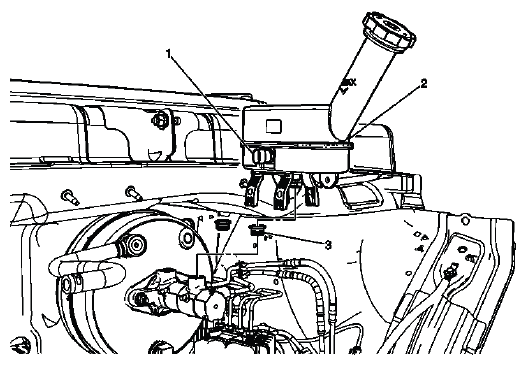
Fig. 7: Identifying Master Cylinder Reservoir
Master Cylinder Reservoir Replacement
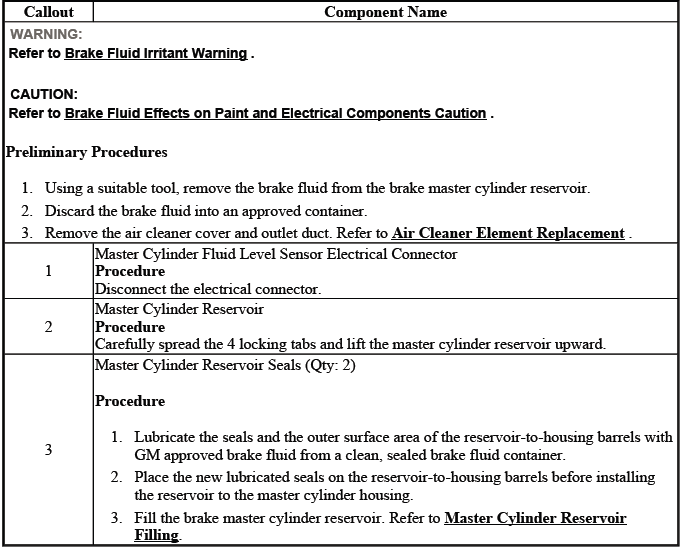
MASTER CYLINDER REPLACEMENT
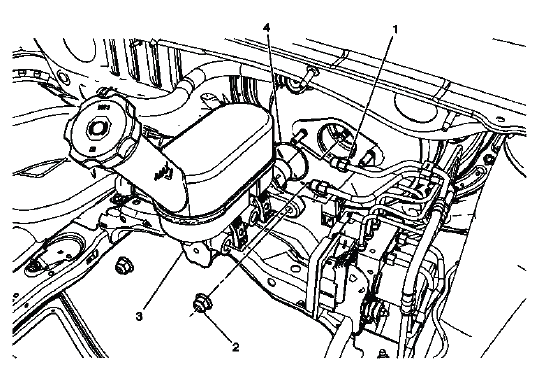
Fig. 8: View Of Master Cylinder
Master Cylinder Replacement
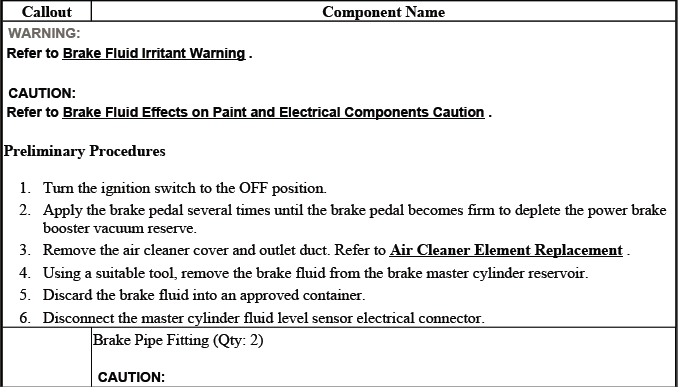
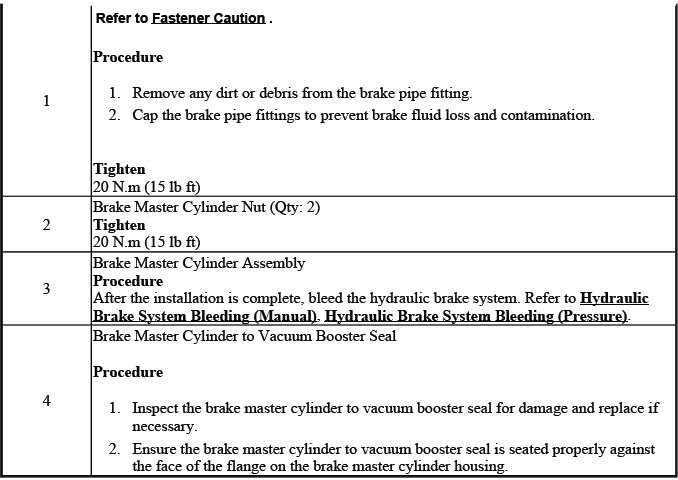
MASTER CYLINDER BENCH BLEEDING
1. Secure the mounting flange of the brake master cylinder in a bench vise so that the rear of the primary piston is accessible.
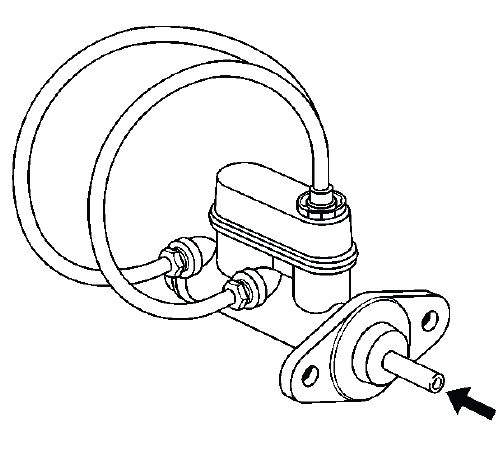
Fig. 9: Bleeding Master Cylinder
WARNING: Refer to Brake Fluid Irritant Warning.
CAUTION: Refer to Brake Fluid Effects on Paint and Electrical Components Caution.
2. Remove the master cylinder reservoir cap and diaphragm.
3. Install suitable fittings to the master cylinder ports that match the type of flare seat required and also provide for hose attachment.
4. Install transparent hoses to the fittings installed to the master cylinder ports, then route the hoses into the master cylinder reservoir.
5. Fill the master cylinder reservoir to at least the half-way point with GM approved brake fluid from a clean, sealed brake fluid container. Refer to Master Cylinder Reservoir Filling.
6. Ensure that the ends of the transparent hoses running into the master cylinder reservoir are fully submerged in the brake fluid.
7. Using a smooth, round-ended tool, depress and release the primary piston as far as it will travel, a depth of about 25 mm (1 in), several times. Observe the flow of fluid coming from the ports.
As air is bled from the primary and secondary pistons, the effort required to depress the primary piston will increase and the amount of travel will decrease.
8. Continue to depress and release the primary piston until fluid flows freely from the ports with no evidence of air bubbles.
9. Remove the transparent hoses from the master cylinder reservoir.
10. Install the master cylinder reservoir cap and diaphragm.
11. Remove the fittings with the transparent hoses from the master cylinder ports. Wrap the master cylinder with a clean shop cloth to prevent brake fluid spills.
12. Remove the master cylinder from the vise.
BRAKE FLUID LEVEL INDICATOR SWITCH REPLACEMENT
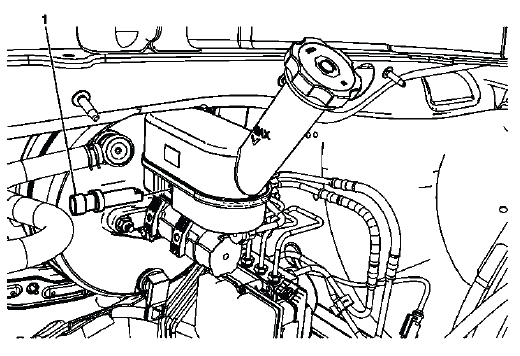
Fig. 10: Identifying Brake Fluid Level Sensor
Brake Fluid Level Indicator Switch Replacement


BRAKE PEDAL ASSEMBLY REPLACEMENT
Removal Procedure
1. Remove the left side instrument panel (I/P) insulator panel. Refer to Instrument Panel Insulator Panel Replacement - Left Side.
2. Remove the driver knee bolster. Refer to Driver Knee Bolster Replacement (Acadia) , Driver Knee Bolster Replacement (Enclave) , Driver Knee Bolster Replacement (Traverse).
3. Remove the accelerator pedal position sensor. Refer to Accelerator Pedal Position Sensor Replacement.
4. Disconnect the brake pedal position sensor electrical connector (1).
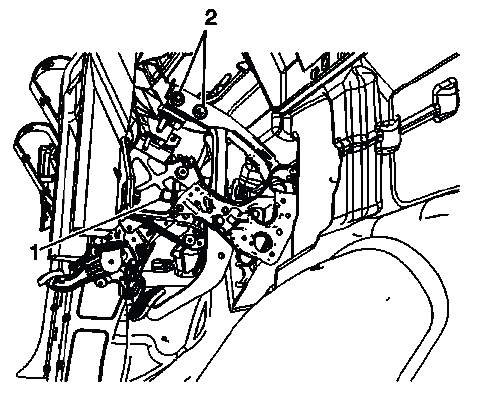
Fig. 11: View Of Brake Pedal Bracket Bolts
5. Remove the 2 brake pedal bracket bolts (2).
6. Remove the brake pedal pushrod retainer (1).
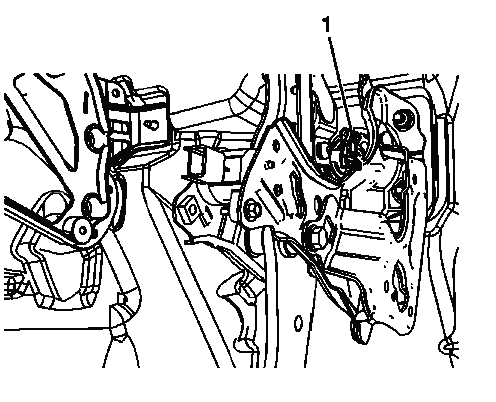
Fig. 12: View Of Brake Pedal Pushrod Retainer
7. Remove the brake pedal pushrod clevis pin.
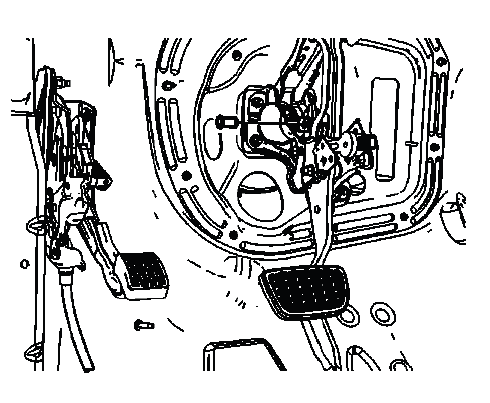
Fig. 13: Identifying Brake Pedal Pushrod Clevis Pin
8. Remove the intermediate steering shaft. Refer to Intermediate Steering Shaft Replacement.
9. Remove the 4 vacuum booster nuts.
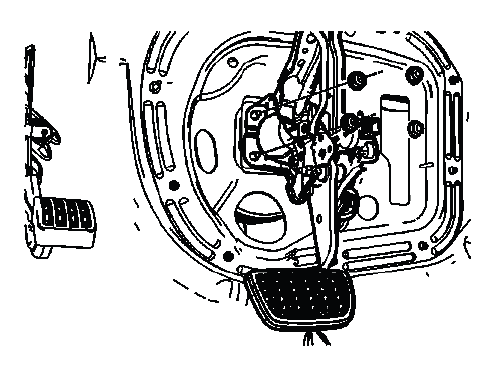
Fig. 14: Locating Vacuum Booster Nuts
10. Position the vacuum brake booster and master cylinder assembly forward slightly to allow the brake pedal and bracket assembly to clear the booster studs.
11. Remove the brake pedal assembly.
Installation Procedure
1. Position the brake pedal assembly to the dash panel.
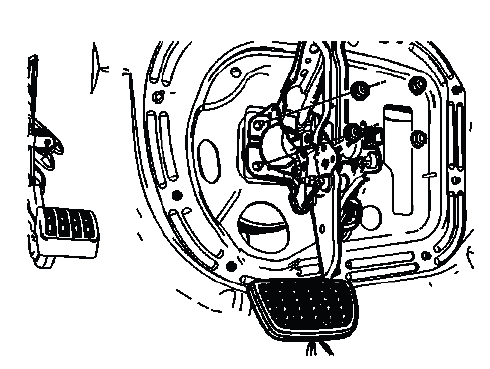
Fig. 15: Locating Vacuum Booster Nuts
2. Position the vacuum brake booster and master cylinder assembly to the dash panel.
3. Install the 4 vacuum booster nuts.
CAUTION: Refer to Fastener Caution.
Tighten
- Tighten the nuts to 25 N.m (18 lb ft).
4. Position the brake pedal pushrod to the brake pedal.
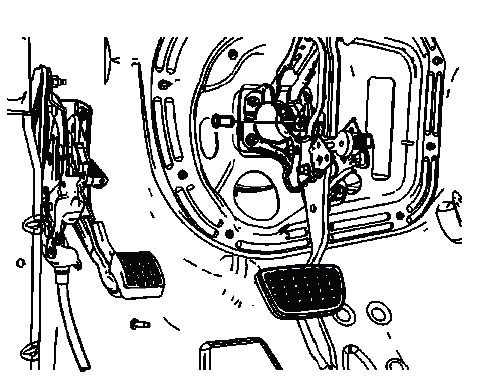
Fig. 16: Identifying Brake Pedal Pushrod Clevis Pin
5. Install the brake pedal pushrod clevis pin.
6. Install the brake pedal pushrod retainer (1).
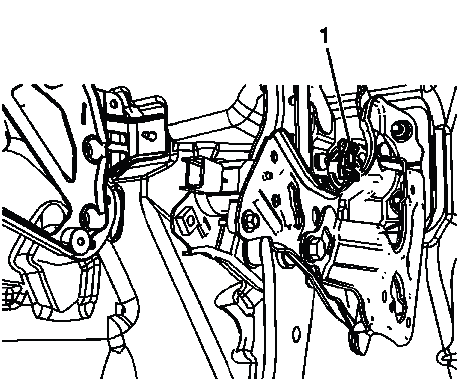
Fig. 17: View Of Brake Pedal Pushrod Retainer
7. Install the intermediate steering shaft. Refer to Intermediate Steering Shaft Replacement.
8. Connect the brake pedal position sensor electrical connector (1).
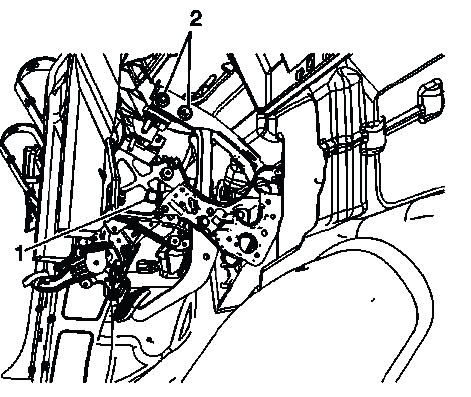
Fig. 18: View Of Brake Pedal Bracket Bolts
9. Install the 2 brake pedal bracket bolts (2).
Tighten
- Tighten the bolts to 22 N.m (16 lb ft).
10. Install the accelerator pedal position sensor. Refer to Accelerator Pedal Position Sensor Replacement.
11. Install the driver knee bolster. Refer to Driver Knee Bolster Replacement (Acadia) , Driver Knee Bolster Replacement (Enclave) , Driver Knee Bolster Replacement (Traverse).
12. Install the left side I/P insulator panel. Refer to Instrument Panel Insulator Panel Replacement - Left Side.
13. Calibrate the brake pedal position sensor. Refer to Brake Pedal Position Sensor Calibration.
BRAKE PIPE REPLACEMENT
Special Tools
- CH-45405 Brake Pipe Flaring Kit
For equivalent regional tools, refer to Special Tools.
1. Inspect the area of brake pipe to be repaired or replaced.
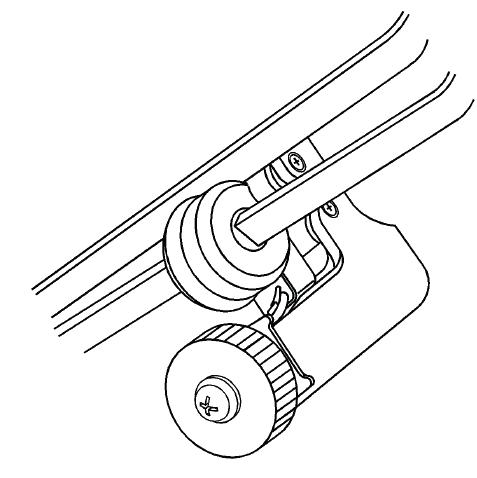
Fig. 19: Sectioning Brake Pipe Using Pipe Cutter
WARNING: Refer to Brake Fluid Irritant Warning.
WARNING: Always use double walled steel brake pipe when replacing brake pipes. The use of any other pipe is not recommended and may cause brake system failure. Carefully route and retain replacement brake pipes. Always use the correct fasteners and the original location for replacement brake pipes. Failure to properly route and retain brake pipes may cause damage to the brake pipes and cause brake system failure.
CAUTION: Refer to Brake Fluid Effects on Paint and Electrical Components Caution.
NOTE: When servicing the brake pipes, note the following:
- If sectioning the brake pipe, use replacement pipe of the same type and outside diameter.
- Use fittings of the appropriate size and type.
- Only create flares of the same type or design as originally equipped on the vehicle.
2. Release the brake pipe to be replaced from the retainers, as required.
3. Select an appropriate location to section the brake pipe, if necessary.
- Allow adequate clearance in order to maneuver the CH-45405 Brake Pipe Flaring Kit.
- Avoid sectioning the brake pipe at bends or mounting points.
4. Using a string or wire, measure the length of the pipe to be replaced including all pipe bends.
5. Add to the measurement taken the appropriate additional length required for each flare to be created.
Specification
- 6.35 mm (0.250 in) for 4.76 mm (3/16 in) diameter pipe
- 9.50 mm (0.374 in) for 6.35 mm (1/4 in) diameter pipe
- 12.67 mm (0.499 in) for 7.94 mm (5/16 in) diameter pipe
6. Using the pipe cutter included in the CH-45405 Brake Pipe Flaring Kit, carefully cut the brake pipe squarely to the measured length.
NOTE: Ensure that the brake pipe end to be flared is cut at a square, 90º angle to the pipe length.
7. Remove the sectioned brake pipe from the vehicle.
8. Select the appropriate size of brake pipe and tube nuts, as necessary. The brake pipe outside diameter determines brake pipe size.
9. Strip the nylon coating from the brake pipe end to be flared, if necessary.
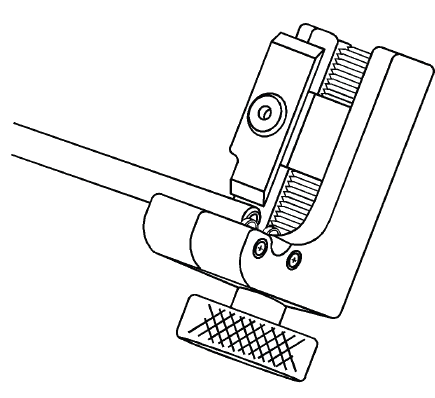
Fig. 20: Stripping Nylon Coating From Brake Pipe Ends
- Select the appropriate blade on the coating stripping tool included in the CH-45405 Brake Pipe Flaring Kit, by unthreading the blade block from the stripping tool and installing the block with the desired blade facing the tool rollers.
Specification
- 6.35 mm (0.250 in) blade for 4.76 mm (3/16 in) diameter pipe
- 9.50 mm (0.374 in) blade for 6.35 mm (1/4 in) and 7.94 mm (5/16 in) diameter pipe
- Insert the brake pipe end to be flared into the stripping tool to the depth of the ledge on the tool rollers.
- While holding the brake pipe firmly against the stripping tool roller ledges, rotate the thumbwheel of the tool until the blade contacts the brake pipe coated surface.
NOTE: Do not gouge the metal surface of the brake pipe.
- Rotate the stripping tool in a clockwise direction, ensuring that the brake pipe end remains against the tool roller ledges.
- After each successive revolution of the stripping tool, carefully rotate the thumbwheel of the tool clockwise, in order to continue stripping the coating from the brake pipe until the metal pipe surface is exposed.
- Loosen the thumbwheel of the tool and remove the brake pipe.
NOTE: Ensure that all loose remnants of the nylon coating have been removed from the brake pipe.
- Inspect the stripped end of the brake pipe to ensure that the proper amount of coating has been removed.
Specification
- 6.35 mm (0.250 in) for 4.76 mm (3/16 in) diameter pipe
- 9.50 mm (0.374 in) for 6.35 mm (1/4 in) and 7.94 mm (5/16 in) diameter pipe
10. Chamfer the inside and outside diameter of the pipe with the de-burring tool included in the CH-45405 Brake Pipe Flaring Kit.
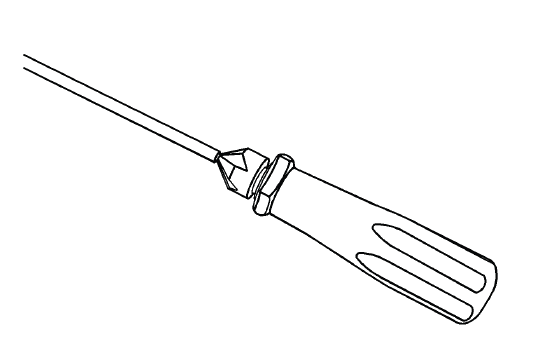
Fig. 21: Chamfering Pipe Using De-Burring Tool
11. Install the tube nuts on the brake pipe, noting their orientation.
12. Clean the brake pipe and the CH-45405 Brake Pipe Flaring Kit of lubricant, contaminants and debris.
13. Loosen the die clamping screw of the CH-45405 Brake Pipe Flaring Kit.
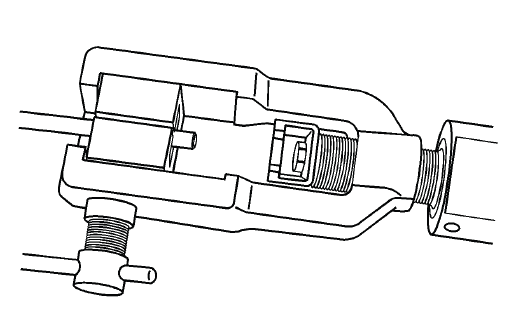
Fig. 22: Installing Die Halves Into Die Cage
14. Select the corresponding die set and install the die halves into the die cage with the full, flat face of one die facing the clamping screw and the counterbores of both dies facing the forming ram.
15. Place the flat face of an unused die (1) against the die halves in the clamping cage and hold firmly against the counterbored face of the dies.
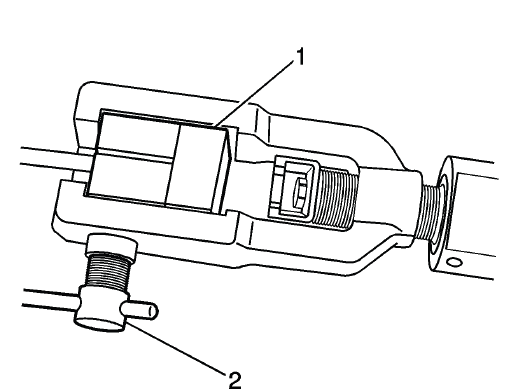
Fig. 23: View Of Clamping Screw & Unused Die
16. Insert the prepared end of the pipe to be flared through the back of the dies until the pipe is seated against the flat surface of the unused die (1).
17. Remove the unused die (1).
18. Ensure that the rear of both dies are seated firmly against the enclosed end of the die cage.
19. Firmly hand tighten the clamping screw (2) against the dies.
20. Select the appropriate forming mandrel and place into the forming ram.
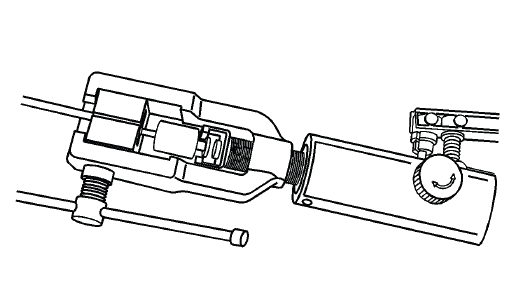
Fig. 24: Rotating J 45405 To Bottom Against Die Cage
21. Rotate the hydraulic fluid control valve clockwise to the closed position.
22. Rotate the body of the CH-45405 Brake Pipe Flaring Kit until it bottoms against the die cage.
23. While guiding the forming mandrel into the exposed end of pipe to be flared, operate the lever of the CH- 45405 Brake Pipe Flaring Kit until the forming mandrel bottoms against the clamping dies.
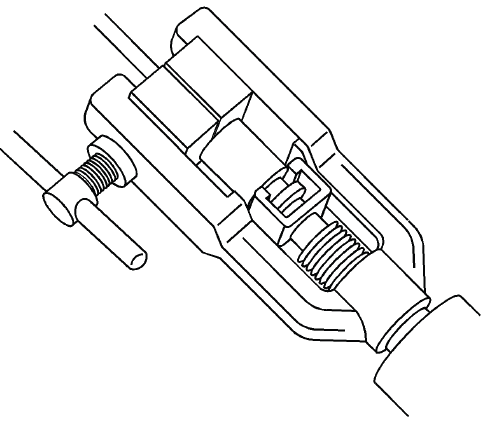
Fig. 25: Bottoming Forming Mandrel Against Clamping Dies Using Pipe Flaring
Tool
24. Rotate the hydraulic fluid control valve counterclockwise to the open position to allow the hydraulic forming ram to retract.
25. Insert the finishing cone into the forming ram.
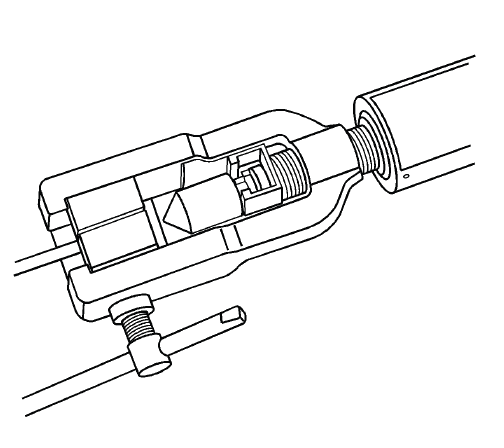
Fig. 26: Using Pipe Flaring Tool
26. Rotate the hydraulic fluid control valve clockwise to the closed position.
27. Rotate the body of the CH-45405 Brake Pipe Flaring Kit until it bottoms against the die cage.
28. While guiding the finishing cone into the exposed end of pipe to be flared, operate the lever of the CH- 45405 Brake Pipe Flaring Kit until the finishing cone bottoms against the dies.
29. Rotate the hydraulic fluid control valve counterclockwise to the open position to allow the hydraulic forming ram to retract.
30. Loosen the die clamping screw and remove the dies and pipe.
31. If necessary, lightly tap the dies until the die halves separate.
32. Inspect the brake pipe flare for correct shape and diameter (a).
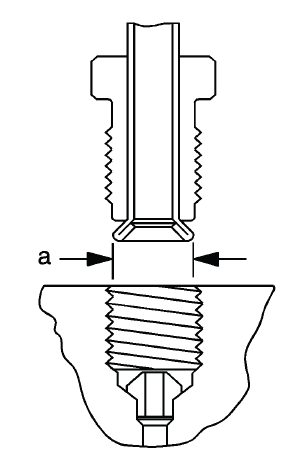
Fig. 27: Identifying Correct Brake Pipe Flare Shape & Diameter
Specification
- 6.74-7.10 mm (0.265-0.279 in) flare diameter for 4.76 mm (3/16 in) diameter pipe
- 8.57-9.27 mm (0.344-0.358 in) flare diameter for 6.35 mm (1/4 in) diameter pipe
- 10.42-10.79 mm (0.410-0.425 in) flare diameter for 7.94 mm (5/16 in) diameter pipe
33. If necessary, using the removed section of brake pipe as a template, shape the new pipe with a suitable brake pipe bending tool.
34. Install the pipe to the vehicle with the appropriate brake pipe unions, as required.
NOTE: When installing the pipe, maintain a clearance of 19 mm (3/4 in) from all moving or vibrating components.
35. If previously released, secure the brake pipe to the retainers.
36. Bleed the hydraulic brake system. Refer to Hydraulic Brake System Bleeding (Manual), Hydraulic Brake System Bleeding (Pressure).
37. With the aid of an assistant, inspect the brake pipe flares for leaks by starting the engine and applying the brakes.
FRONT BRAKE HOSE REPLACEMENT
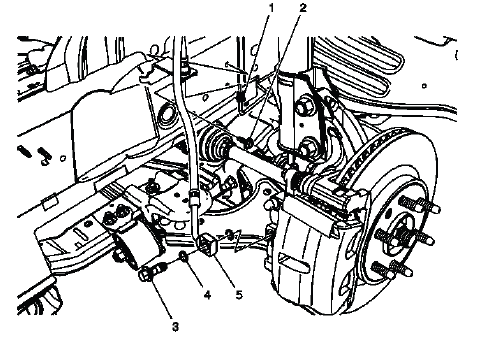
Fig. 28: Identifying Front Brake Hose
Front Brake Hose Replacement
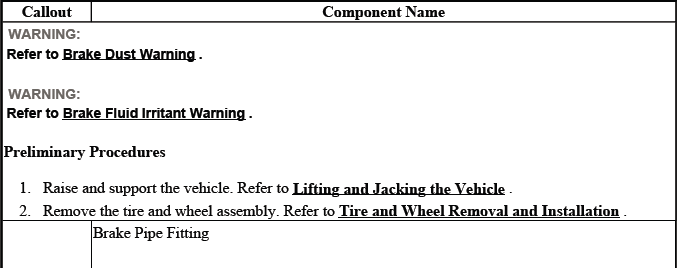

REAR BRAKE HOSE REPLACEMENT
Removal Procedure
WARNING: Refer to Brake Dust Warning.
WARNING: Refer to Brake Fluid Irritant Warning.
1. Raise and support the vehicle. Refer to Lifting and Jacking the Vehicle.
2. Remove the tire and wheel assembly. Refer to Tire and Wheel Removal and Installation.
3. Remove any dirt or debris from the brake pipe fitting (1).
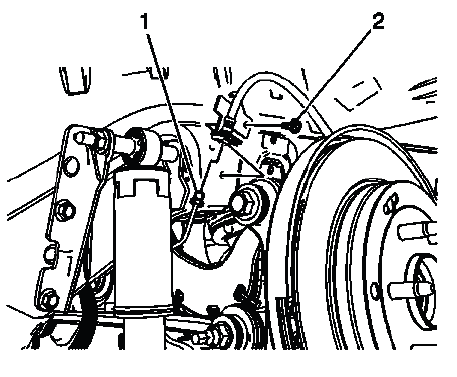
Fig. 29: View Of Brake Hose Bracket Bolt
4. Using a backup wrench on the brake hose fitting, disconnect the brake pipe fitting.
Cap the brake pipe fitting to prevent brake fluid loss and contamination.
5. Remove the brake hose bracket bolt (2).
6. Remove the brake hose fitting bolt (1).
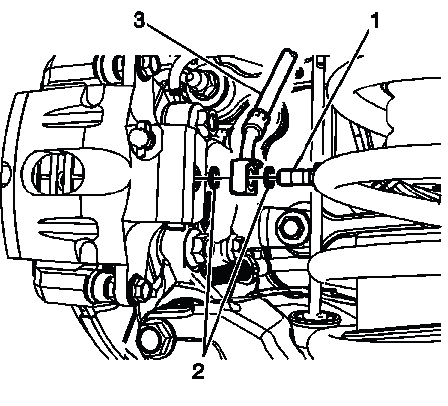
Fig. 30: Identifying Brake Hose Fitting Bolt
7. Remove and discard the 2 brake hose fitting gaskets (2).
8. Remove the brake hose (3).
Installation Procedure
1. Assemble the brake hose fitting bolt (1) and 2 new brake hose fitting gaskets (2) to the brake hose (3).
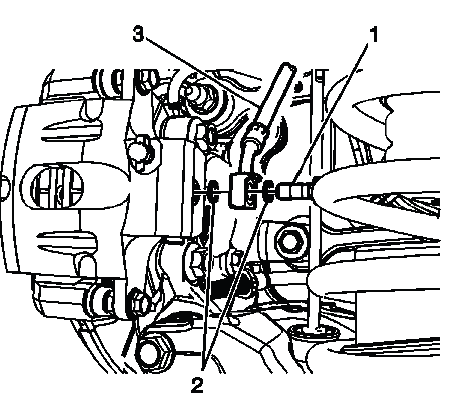
Fig. 31: Identifying Brake Hose Fitting Bolt
2. Install the brake hose assembly to the caliper and tighten the brake hose fitting bolt to 50 N.m (37 lb ft).
CAUTION: Refer to Fastener Caution.
3. Install the brake hose bracket bolt (2) and tighten to 9 N.m (80 lb in).
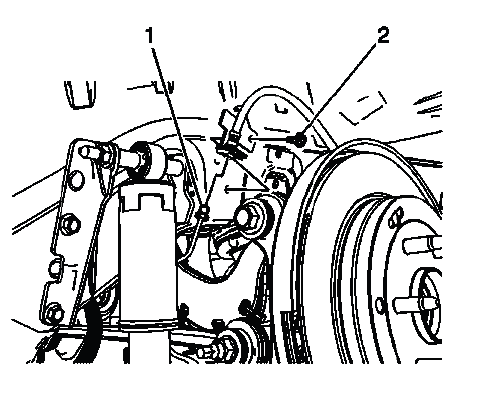
Fig. 32: View Of Brake Hose Bracket Bolt
4. Using a backup wrench on the brake hose fitting, connect the brake pipe fitting (1) and tighten to 17 N.m (13 lb ft).
5. Bleed the hydraulic brake system. Refer to Hydraulic Brake System Bleeding (Manual), Hydraulic Brake System Bleeding (Pressure).
6. Install the tire and wheel assembly. Refer to Tire and Wheel Removal and Installation.
HYDRAULIC BRAKE SYSTEM BLEEDING (MANUAL)
WARNING: Refer to Brake Fluid Irritant Warning.
CAUTION: Refer to Brake Fluid Effects on Paint and Electrical Components Caution.
CAUTION: Only use products that comply with GM specifications and check manufacturer information respectively. We recommend the use of GM genuine products. Instructions must be followed at all times. The use of any type of fluid other than the recommended type of brake fluid, may cause contamination which could result in damage to the internal rubber seals and/or rubber linings of hydraulic brake system components.
If hydraulic components were serviced on only one wheel hydraulic circuit, perform the following procedure.
Bleeding a Single Hydraulic Brake Circuit
1. With the ignition OFF and the brakes cool, apply the brakes 3-5 times or until the brake pedal effort increases significantly, in order to deplete the brake booster power reserve.
2. Place a clean shop cloth beneath the brake master cylinder to catch brake fluid spills.
3. Clean the outside of the reservoir on and around the reservoir cap prior to removing the cap and diaphragm.
4. Fill the brake master cylinder reservoir to the maximum-full level with GM approved brake fluid from a clean, sealed brake fluid container. Add brake fluid as needed to ensure that the brake master cylinder reservoir remains at least half-full throughout the bleed procedure. The reservoir cap must be installed at all times except when filling the reservoir. Refer to Fluid and Lubricant Recommendations.
5. Install a proper box-end wrench onto the wheel hydraulic circuit bleeder valve which has been serviced.
6. Install a transparent hose over the end of the bleeder valve.
7. Submerge the open end of the transparent hose into a transparent container partially filled with brake fluid from a clean, sealed brake fluid container.
8. Have an assistant slowly press the brake pedal fully and maintain steady pressure on the pedal.
9. Loosen the bleeder valve to purge air from the wheel hydraulic circuit.
10. Tighten the bleeder valve, then have the assistant slowly release the brake pedal.
11. Wait 15 seconds, then repeat steps 8-10 until all air is purged from the wheel hydraulic circuit.
12. After all air has been purged from the hydraulic circuit, tighten the bleeder valve and install the dust cap.
13. Fill the brake master cylinder reservoir to the maximum-fill level with GM approved brake fluid from a clean, sealed brake fluid container.
14. Slowly press and release the brake pedal. Observe the brake pedal feel.
15. If the brake pedal feels spongy, perform Bleeding the Complete Brake Hydraulic System procedure: 16. Turn the ignition key ON, with the engine OFF. Check to see if the brake system warning lamp remains illuminated.
17. If the brake system warning lamp remains illuminated, refer to Diagnostic Starting Point - Vehicle.
NOTE: DO NOT allow the vehicle to be driven until it is diagnosed and repaired.
Bleeding the Complete Brake Hydraulic System
1. With the ignition OFF and the brakes cool, apply the brakes 3-5 times or until the brake pedal effort increases significantly, in order to deplete the brake booster power reserve.
2. Place a clean shop cloth beneath the brake master cylinder to catch brake fluid spills.
3. Clean the outside of the reservoir on and around the reservoir cap prior to removing the cap and diaphragm.
4. Fill the brake master cylinder reservoir to the maximum-full level with GM approved brake fluid from a clean, sealed brake fluid container. Add brake fluid as needed to ensure that the brake master cylinder reservoir remains at least half-full throughout the bleed procedure. The reservoir cap must be installed at all times except when filling the reservoir. Refer to Fluid and Lubricant Recommendations.
5. If the master cylinder was replaced, the master cylinder must be bench bled. Refer to Master Cylinder Bench Bleeding.
6. If the brake pipes have been removed from the master cylinder, the following steps must be performed.
- With the rear brake pipe installed securely to the master cylinder, loosen and separate the front brake pipe fitting from the front port of the brake master cylinder.
- Allow a small amount of brake fluid to gravity bleed from the open port
of the master cylinder.
Capture and properly dispose of the brake fluid in an approved container.
- Install the front brake pipe fitting to the front port of the brake master cylinder and tighten the fitting. Refer to Fastener Tightening Specifications.
- Have an assistant slowly press the brake pedal fully and maintain steady pressure on the pedal.
- Loosen the front brake pipe fitting from the front port of the brake master cylinder to purge air from the master cylinder port.
- Tighten the front brake pipe fitting, then have the assistant slowly release the brake pedal.
- Wait 15 seconds, then repeat steps 6.4-6.6 until all air is purged from the front brake pipe fitting of the front port of the master cylinder.
- After all air is purged from the front port of the brake master cylinder, tighten the front master cylinder brake pipe fitting. Refer to Fastener Tightening Specifications.
- With the front brake pipe fitting installed securely to the front port of the brake master cylinder, loosen and separate the rear brake pipe fitting from the rear port of the brake master cylinder.
- Repeat steps 6.2-6.7 for the rear port of the brake master cylinder.
- After all air is purged from the rear port of the brake master cylinder, tighten the rear master cylinder brake pipe fitting. Refer to Fastener Tightening Specifications.
- Slowly press and release the brake pedal. Observe the brake pedal feel.
- If the brake pedal feels spongy, proceed to step 7.
- If the brake pedal feels firm, proceed to step 24.
7. If the brake pipes have been removed from the brake pressure modulator valve (BPMV) assembly, if equipped or the brake proportion valve assembly, if equipped, air must be purged from each port of the respective assembly beginning with the feed pipes from the master cylinder.
- Loosen and separate one of the master cylinder brake pipe fittings from the inlet port of the assembly to be bled.
- Allow a small amount of brake fluid to gravity bleed from the open port of the assembly. Capture and properly dispose of the brake fluid in an approved container.
- Install the brake pipe fitting and to the inlet port of the assembly and tighten securely.
- Have an assistant slowly press the brake pedal fully and maintain steady pressure on the pedal.
- Loosen the same brake pipe fitting to purge air from the open port of the assembly.
- Tighten the brake pipe fitting, then have the assistant slowly release the brake pedal.
- Wait 15 seconds, then repeat steps 7.4-7.6 until all air is purged from the brake pipe fitting of the assembly.
- Repeat steps 7.1-7.7 for all of the remaining ports of the assembly.
- After bleeding each port of the assembly, tighten all of the brake pipe
fittings on the assembly.
Refer to Fastener Tightening Specifications.
- Fill the master cylinder reservoir to the maximum-full level with GM approved brake fluid from a clean, sealed brake fluid container.
- Slowly press and release the brake pedal. Observe the brake pedal feel.
- If the brake pedal feels spongy, proceed to step 8.
- If the brake pedal feels firm, proceed to step 24.
8. Install a proper box-end wrench onto the RIGHT REAR wheel hydraulic circuit bleeder valve.
9. Install a transparent hose over the end of the bleeder valve.
10. Submerge the open end of the transparent hose into a transparent container partially filled with GM approved brake fluid from a clean, sealed brake fluid container.
11. Have an assistant slowly press the brake pedal fully and maintain steady pressure on the brake pedal.
12. Loosen the bleeder valve to purge air from the wheel hydraulic circuit.
13. Tighten the bleeder valve, then have the assistant slowly release the brake pedal.
14. Wait 15 seconds, then repeat steps 11-13 until all air is purged from the wheel hydraulic circuit.
15. Tighten the RIGHT REAR hydraulic wheel circuit bleeder valve securely.
16. Install a proper box-end wrench onto the LEFT REAR wheel hydraulic circuit bleeder valve, then repeat steps 9-14.
17. Install a proper box-end wrench onto the RIGHT FRONT wheel hydraulic circuit bleeder valve, then repeat steps 9-14.
18. Install a proper box-end wrench onto the LEFT FRONT wheel hydraulic circuit bleeder valve, then repeat steps 9-14.
19. After completing the final wheel hydraulic circuit bleeding procedure, tighten all of the wheel hydraulic circuit bleeder valves and install the bleeder valve dust caps.
20. Fill the master cylinder reservoir to the maximum-full level with GM approved brake fluid from a clean, sealed brake fluid container.
21. Slowly press and release the brake pedal. Observe the brake pedal feel.
22. If the brake pedal feels spongy, perform the following procedure.
- If equipped with antilock brakes, install a scan tool and perform the Anti-Lock Brake System Automated Bleed to remove air which may be trapped in the BPMV.
- Inspect the hydraulic brake system for external leaks. Refer to Brake System External Leak Inspection.
- Repeat the Bleeding the Complete Brake Hydraulic System procedure.
23. If the brake pedal still feels spongy, pressure bleed the hydraulic brake system. Refer to Hydraulic Brake System Bleeding (Manual), Hydraulic Brake System Bleeding (Pressure) 24. Turn the ignition switch ON with the engine OFF. Check to see if the brake system warning lamp remains illuminated.
25. If the brake system warning lamp remains illuminated, refer to Diagnostic Starting Point - Vehicle.
NOTE: DO NOT allow the vehicle to be driven until the brake system is diagnosed and repaired.
HYDRAULIC BRAKE SYSTEM BLEEDING (PRESSURE)
WARNING: Refer to Brake Fluid Irritant Warning.
CAUTION: Refer to Brake Fluid Effects on Paint and Electrical Components Caution.
CAUTION: Only use products that comply with GM specifications and check manufacturer information respectively. We recommend the use of GM genuine products. Instructions must be followed at all times. The use of any type of fluid other than the recommended type of brake fluid, may cause contamination which could result in damage to the internal rubber seals and/or rubber linings of hydraulic brake system components.
If hydraulic components were serviced on only one wheel hydraulic circuit, perform the following procedure.
Bleeding a Single Hydraulic Brake Circuit
1. With the ignition OFF and the brakes cool, apply the brakes 3-5 times or until the brake pedal effort increases significantly, in order to deplete the brake booster power reserve.
2. Place a clean shop cloth beneath the brake master cylinder to catch brake fluid spills.
3. Clean the outside of the reservoir on and around the reservoir cap prior to removing the cap and diaphragm.
4. Fill the brake master cylinder reservoir to the maximum-full level with GM approved brake fluid from a clean, sealed brake fluid container. Refer to Fluid and Lubricant Recommendations.
5. Following the brake pressure bleeder manufacturer's instructions, fill the brake pressure bleeder with GM approved brake fluid from a clean, sealed brake fluid container.
NOTE: The pressure bleeding equipment must be the diaphragm type. The rubber diaphragm between the air supply and the brake fluid prevents air, moisture, oil and other contaminants from entering the hydraulic system.
6. Install the appropriate master cylinder reservoir adapter and connect the brake pressure bleeder.
7. Charge the brake pressure bleeder air tank to 170-200 kPa/1.7-2.0 bar (25-30 psi) or as recommended by the brake pressure bleeder manufacturer's instructions.
8. Open the brake pressure bleeder fluid tank valve to allow pressurized brake fluid to enter the brake hydraulic system.
9. Wait approximately 30 seconds, then inspect the entire hydraulic brake system for external brake fluid leaks.
NOTE: Any brake fluid leaks identified require repair prior to completing this procedure.
10. Install a proper box-end wrench onto the wheel hydraulic circuit bleeder valve which has been serviced.
11. Install a transparent hose over the end of the bleeder valve.
12. Submerge the open end of the transparent hose into a transparent container partially filled with brake fluid from a clean, sealed brake fluid container.
13. Loosen the bleeder valve to purge air from the wheel hydraulic circuit.
14. Allow fluid to flow until air bubbles stop flowing from the bleeder.
15. After all air has been purged from the hydraulic circuit, tighten the bleeder valve and install the dust cap.
16. Close the brake pressure bleeder fluid tank valve then disconnect the brake pressure bleeder from the master cylinder reservoir bleeder adapter.
NOTE: The brake reservoir may have residual pressure after the bleeding operation is complete. Wrap a clean shop towel around the bleeder adapter and all hose connections before disconnecting the pressure bleeding equipment to prevent brake fluid from contacting and damaging vehicle components and painted surfaces.
17. Remove the master cylinder reservoir bleeder adapter from the master cylinder reservoir.
18. Fill the brake master cylinder reservoir to the maximum-fill level with GM approved brake fluid from a clean, sealed brake fluid container.
19. Slowly press and release the brake pedal. Observe the brake pedal feel.
20. If the brake pedal feels spongy, perform Bleeding the Complete Brake Hydraulic System procedure: 21. Turn the ignition key ON, with the engine OFF. Check to see if the brake system warning lamp remains illuminated.
22. If the brake system warning lamp remains illuminated, refer to Diagnostic Starting Point - Vehicle.
NOTE: DO NOT allow the vehicle to be driven until it is diagnosed and repaired.
Bleeding the Complete Brake Hydraulic System
1. With the ignition OFF and the brakes cool, apply the brakes 3-5 times or until the brake pedal effort increases significantly, in order to deplete the brake booster power reserve.
2. Place a clean shop cloth beneath the brake master cylinder to catch brake fluid spills.
3. Clean the outside of the reservoir on and around the reservoir cap prior to removing the cap and diaphragm.
4. Fill the brake master cylinder reservoir to the maximum-full level with GM approved brake fluid from a clean, sealed brake fluid container. Refer to Fluid and Lubricant Recommendations.
5. If the master cylinder was replaced, the master cylinder must be bench bled. Refer to Master Cylinder Bench Bleeding.
6. If the brake pipes have been removed from the master cylinder, the following steps must be performed.
- With the rear brake pipe installed securely to the master cylinder, loosen and separate the front brake pipe fitting from the front port of the brake master cylinder.
- Allow a small amount of brake fluid to gravity bleed from the open port
of the master cylinder.
Capture and properly dispose of the brake fluid in an approved container.
- Install the front brake pipe fitting to the front port of the brake master cylinder and tighten the fitting.
- Have an assistant slowly press the brake pedal fully and maintain steady pressure on the pedal.
- Loosen the front brake pipe fitting from the front port of the brake master cylinder to purge air from the master cylinder port.
- Tighten the front brake pipe fitting, then have the assistant slowly release the brake pedal.
- Wait 15 seconds, then repeat steps 6.4-6.6 until all air is purged from the front brake pipe fitting of the front port of the master cylinder.
- After all air is purged from the front port of the brake master cylinder, tighten the front master cylinder brake pipe fitting. Refer to Fastener Tightening Specifications.
- With the front brake pipe fitting installed securely to the front port of the brake master cylinder, loosen and separate the rear brake pipe fitting from the rear port of the brake master cylinder.
- Repeat steps 6.2-6.7 for the rear port of the brake master cylinder.
- After all air is purged from the rear port of the brake master cylinder, tighten the rear master cylinder brake pipe fitting. Refer to Fastener Tightening Specifications.
- Slowly press and release the brake pedal. Observe the brake pedal feel.
- If the brake pedal feels spongy, proceed to step 7.
- If the brake pedal feels firm, proceed to step 24.
7. If the brake pipes have been removed from the brake pressure modulator valve (BPMV) assembly, if equipped or the brake proportion valve assembly, if equipped, air must be purged from each port of the respective assembly beginning with the feed pipes from the master cylinder.
- Loosen and separate one of the master cylinder brake pipe fittings from the inlet port of the assembly to be bled.
- Allow a small amount of brake fluid to gravity bleed from the open port of the assembly. Capture and properly dispose of the brake fluid in an approved container.
- Install the brake pipe fitting and to the inlet port of the assembly and tighten securely.
- Have an assistant slowly press the brake pedal fully and maintain steady pressure on the pedal.
- Loosen the same brake pipe fitting to purge air from the open port of the assembly.
- Tighten the brake pipe fitting, then have the assistant slowly release the brake pedal.
- Wait 15 seconds, then repeat steps 7.4-7.6 until all air is purged from the brake pipe fitting of the assembly.
- Repeat steps 7.1-7.7 for all of the remaining ports of the assembly.
- After bleeding each port of the assembly, tighten all of the brake pipe
fittings on the assembly.
Refer to Fastener Tightening Specifications.
- Fill the master cylinder reservoir to the maximum-full level with GM approved brake fluid from a clean, sealed brake fluid container.
- Slowly press and release the brake pedal. Observe the brake pedal feel.
- If the brake pedal feels spongy, proceed to step 8.
- If the brake pedal feels firm, proceed to step 24.
8. Following the brake pressure bleeder manufacturer's instructions, fill the brake pressure bleeder with GM approved brake fluid from a clean, sealed brake fluid container.
NOTE: The pressure bleeding equipment must be the diaphragm type. The rubber diaphragm between the air supply and the brake fluid prevents air, moisture, oil and other contaminants from entering the hydraulic system.
9. Install the appropriate master cylinder reservoir adapter and connect the brake pressure bleeder.
10. Charge the brake pressure bleeder air tank to 170-200 kPa/1.7-2.0 bar (25-30 psi) or as recommended by the brake pressure bleeder manufacturer's instructions.
11. Open the brake pressure bleeder fluid tank valve to allow pressurized brake fluid to enter the brake hydraulic system.
12. Wait approximately 30 seconds, then inspect the entire hydraulic brake system for external brake fluid leaks.
NOTE: Any brake fluid leaks identified require repair prior to completing this procedure.
13. Install a proper box-end wrench onto the RIGHT REAR wheel hydraulic circuit bleeder valve.
14. Install a transparent hose over the end of the bleeder valve.
15. Submerge the open end of the transparent hose into a transparent container partially filled with GM approved brake fluid from a clean, sealed brake fluid container.
16. Have an assistant slowly press the brake pedal fully and maintain steady pressure on the brake pedal.
17. Loosen the bleeder valve to purge air from the wheel hydraulic circuit.
18. Tighten the bleeder valve, then have the assistant slowly release the brake pedal.
19. Wait 15 seconds, then repeat steps 11-13 until all air is purged from the wheel hydraulic circuit.
20. Tighten the RIGHT REAR hydraulic wheel circuit bleeder valve securely.
21. Install a proper box-end wrench onto the LEFT REAR wheel hydraulic circuit bleeder valve, then repeat steps 9-14.
22. Install a proper box-end wrench onto the RIGHT FRONT wheel hydraulic circuit bleeder valve, then repeat steps 9-14.
23. Install a proper box-end wrench onto the LEFT FRONT wheel hydraulic circuit bleeder valve, then repeat steps 9-14.
24. After completing the final wheel hydraulic circuit bleeding procedure, tighten all of the wheel hydraulic circuit bleeder valves and install the bleeder valve dust caps.
25. Close the brake pressure bleeder fluid tank valve.
26. Remove the brake pressure bleeding equipment from the vehicle.
NOTE: The brake reservoir may have residual pressure after the bleeding operation is complete. Wrap a clean shop towel around the bleeder adapter and all hose connections before disconnecting the pressure bleeding equipment to prevent brake fluid from contacting and damaging vehicle components and painted surfaces.
27. Fill the brake master cylinder reservoir to the maximum-full level with GM approved brake fluid from a clean, sealed brake fluid container. Refer to Fluid and Lubricant Recommendations.
28. Slowly press and release the brake pedal. Observe the brake pedal feel.
29. If the brake pedal feels spongy, perform the following procedure.
- If equipped with antilock brakes, install a scan tool and perform the Antilock Brake System Automated Bleed to remove air which may be trapped in the BPMV.
- Inspect the hydraulic brake system for external leaks. Refer to Brake System External Leak Inspection.
- Repeat the Bleeding the Complete Brake Hydraulic System procedure.
30. If the brake pedal still feels spongy, pressure bleed the hydraulic brake system. Refer to Hydraulic Brake System Bleeding (Manual), Hydraulic Brake System Bleeding (Pressure).
31. Turn the ignition switch ON with the engine OFF. Check to see if the brake system warning lamp remains illuminated.
32. If the brake system warning lamp remains illuminated, refer to Diagnostic Starting Point - Vehicle.
NOTE: DO NOT allow the vehicle to be driven until the brake system is diagnosed and repaired.
HYDRAULIC BRAKE SYSTEM FLUSHING
WARNING: Refer to Brake Fluid Irritant Warning.
CAUTION: Refer to Brake Fluid Effects on Paint and Electrical Components Caution.
1. Inspect the brake fluid for the following conditions, indicating brake fluid contamination:
- Fluid separation, indicating 2 types of fluid are present; a substance
other than the recommended
brake fluid has been introduced into the brake hydraulic system
- Swirled appearance - oil-based substance
- Layered appearance - silicone-based substance
- Fluid discoloration, indicating the presence of moisture or particles
that have been introduced into
the brake hydraulic system
- Cloudy appearance - moisture
- Dark appearance/suspended particles in fluid - dirt, rust, corrosion, brake dust
2. Inspect the master cylinder reservoir cap diaphragm and the reservoir-to-master cylinder grommets for swelling, indicating brake fluid contamination.
3. If the brake fluid WAS contaminated with an oil-based or a silicone-based substance, indicated by fluid separation and/or a swollen master cylinder reservoir cap diaphragm and/or swollen reservoir-to-master cylinder grommets, perform the following:
- Remove ALL of the following components listed from the vehicle. Each
component contains
internal rubber seals/linings which have been contaminated by the
contaminated brake fluid in the
brake hydraulic system.
Refer to the procedures indicated:
- Master Cylinder Reservoir Replacement
- Master Cylinder Replacement
- Front Brake Hose Replacement
- Rear Brake Hose Replacement
- Front Brake Caliper Replacement
- Rear Brake Caliper Replacement
- Brake Pressure Modulator Valve Replacement
- Clean out all the hydraulic brake pipes using denatured alcohol or equivalent.
- Dry the brake pipes using non-lubricated, filtered air.
- Repair or replace ALL of the following components listed and install
them to the vehicle. Each
component contains internal rubber seals/linings which have been
contaminated by the
contaminated brake fluid in the brake hydraulic system.
Refer to the procedures indicated:
- Master Cylinder Replacement; also perform the following:
Clean the brake master cylinder reservoir using denatured alcohol or
equivalent, then dry the
reservoir using non-lubricated, filtered air. Inspect the reservoir for
cracks and/or damage and
replace if necessary. Refer to Master Cylinder Reservoir Replacement.
Replace the brake master cylinder reservoir cap diaphragm.
- Front Brake Hose Replacement
- Rear Brake Hose Replacement
- Front Brake Caliper Replacement
- Rear Brake Caliper Replacement
- Brake Pressure Modulator Valve Replacement
- Master Cylinder Replacement; also perform the following:
Clean the brake master cylinder reservoir using denatured alcohol or
equivalent, then dry the
reservoir using non-lubricated, filtered air. Inspect the reservoir for
cracks and/or damage and
replace if necessary. Refer to Master Cylinder Reservoir Replacement.
4. If the brake fluid was NOT contaminated with an oil-based or a silicone-based substance, but WAS contaminated with water or dirt, rust, corrosion and/or brake dust, replace the brake master cylinder reservoir cap diaphragm. The diaphragm may have allowed the moisture or particles to enter the hydraulic system.
5. Fill the brake master cylinder reservoir to the maximum-fill level with approved brake fluid from a clean, sealed brake fluid container as specified in the owner's manual.
6. Pressure bleed the hydraulic brake system. Begin the procedure with the pressure bleeder reservoir filled to the maximum-fill level with the correct brake fluid as indicated. Refer to Hydraulic Brake System Bleeding (Manual), Hydraulic Brake System Bleeding (Pressure).
POWER VACUUM BRAKE BOOSTER REPLACEMENT
Removal Procedure
1. Place the vehicle on a level surface and apply the park brake.
2. With the engine OFF, apply and release the brake pedal several times until the brake pedal becomes firm to deplete the vacuum reserve in the vacuum brake booster.
3. Remove the air cleaner housing cover and duct. Refer to Air Cleaner Element Replacement.
4. Disconnect the brake fluid level indicator switch electrical connector.
5. Remove the power brake booster vacuum check valve and hose assembly (1) from the brake booster and position aside.
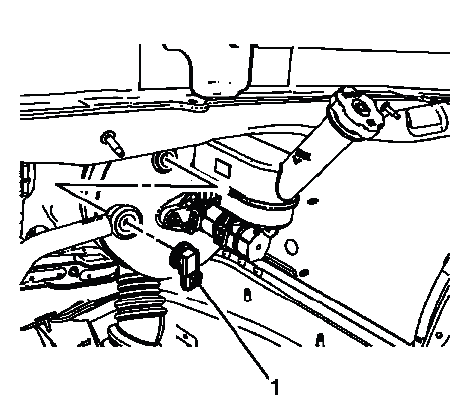
Fig. 33: Power Brake Booster Vacuum Check Valve And Hose Assembly
6. Disconnect the power brake booster vacuum sensor electrical connector.
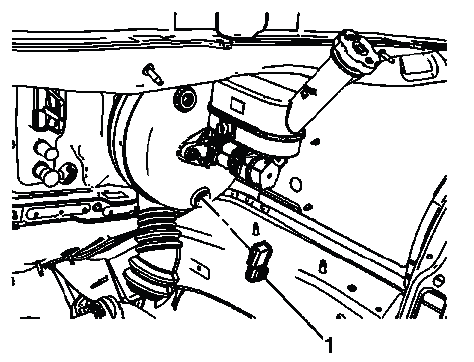
Fig. 34: Power Brake Booster Vacuum Sensor
7. Remove the power brake booster vacuum sensor (1).
8. Release the front and rear brake pipes (1) from the routing clip on the frame rail.
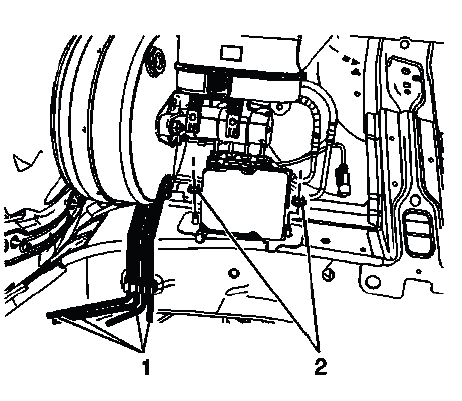
Fig. 35: View Of Front & Rear Brake Pipes
9. Remove the 2 nuts (2) from the brake pressure modulator valve (BPMV) assembly.
10. Carefully lift the BPMV assembly over the studs and position forward slightly.
NOTE: It is not necessary to disconnect the brake pipes from the BPMV assembly.
11. Remove the master cylinder nuts (1).
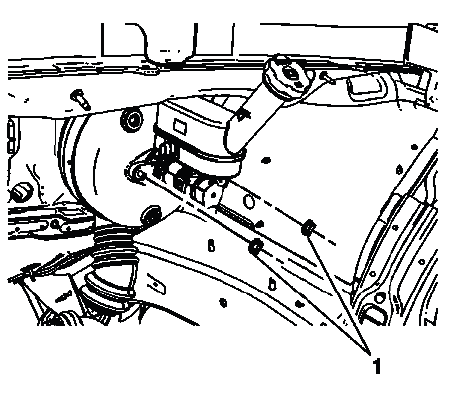
Fig. 36: Power Brake Booster Check Valve And Hose Assembly
12. Without disconnecting the brake pipes from the master cylinder, remove the master cylinder assembly and position aside.
NOTE: It is not necessary to disconnect the brake pipes from the master cylinder.
13. Place the brake master cylinder in an upright position and support with heavy mechanics wire or equivalent.
14. Remove the left side instrument panel insulator panel. Refer to Instrument Panel Insulator Panel Replacement - Left Side.
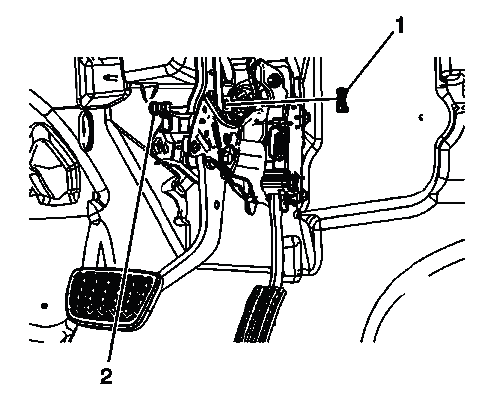
Fig. 37: Identifying Brake Pedal Pushrod Retaining Clip
15. Remove the driver knee bolster. Refer to Driver Knee Bolster Replacement (Acadia) , Driver Knee Bolster Replacement (Enclave) , Driver Knee Bolster Replacement (Traverse).
16. Remove the brake pedal pushrod retaining clip (1).
17. Remove the brake pedal pushrod clevis pin (2) and disconnect the pushrod from the brake pedal.
18. Remove the intermediate steering shaft. Refer to Intermediate Steering Shaft Replacement.
19. Remove the 4 vacuum brake booster nuts.
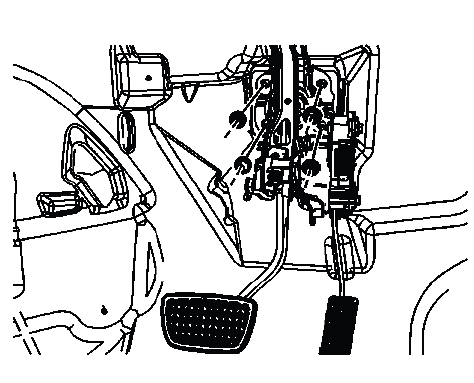
Fig. 38: View Of Vacuum Brake Booster Nuts
20. Pull the vacuum brake booster forward and tilt upward slightly until the mounting studs clear the dash panel.
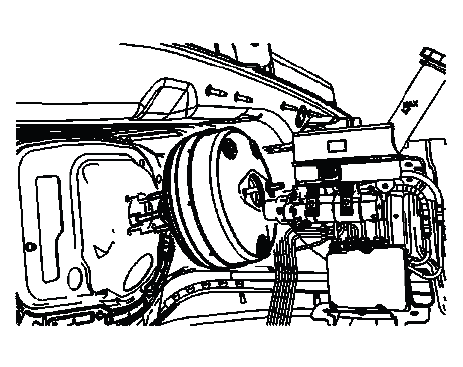
Fig. 39: Identifying Vacuum Brake Booster
21. Remove the vacuum brake booster.
Installation Procedure
1. Align the vacuum brake booster mounting studs to the dash panel.
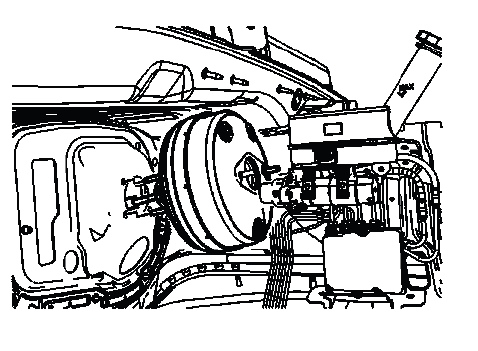
Fig. 40: Identifying Vacuum Brake Booster
NOTE: Inspect the vacuum brake booster to dash panel gasket for damage and replace, if necessary.
2. Install the vacuum brake booster.
3. Install the 4 vacuum brake booster nuts and tighten to 25 (18 lb ft).
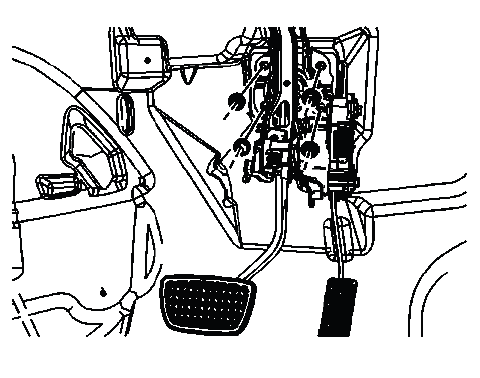
Fig. 41: View Of Vacuum Brake Booster Nuts
CAUTION: Refer to Fastener Caution.
4. Install the intermediate steering shaft. Refer to Intermediate Steering Shaft Replacement.
5. Connect the brake pedal pushrod to the brake pedal and install the clevis pin (2).
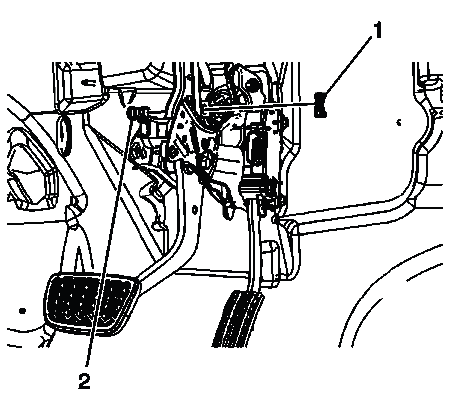
Fig. 42: Identifying Brake Pedal Pushrod Retaining Clip
6. Install the brake pedal pushrod retaining clip (1).
7. Install the driver knee bolster. Refer to Driver Knee Bolster Replacement (Acadia) , Driver Knee Bolster Replacement (Enclave) , Driver Knee Bolster Replacement (Traverse).
8. Install the left side instrument panel insulator panel. Refer to Instrument Panel Insulator Panel Replacement - Left Side.
9. Inspect the master cylinder to vacuum brake booster seal for damage and replace, if necessary.
10. Position the master cylinder to the vacuum booster.
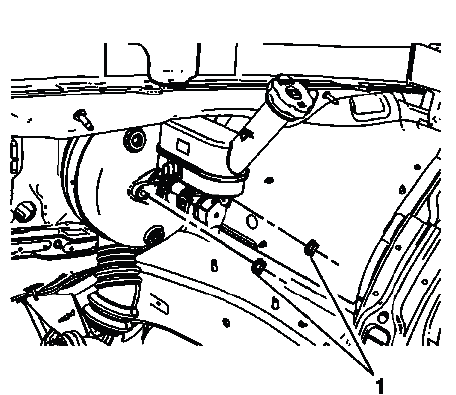
Fig. 43: Power Brake Booster Check Valve And Hose Assembly
NOTE: Ensure the master cylinder to vacuum brake booster seal is properly installed on the back of the master cylinder housing and is not damaged.
11. Install the master cylinder nuts (1) and tighten to 20 (15 lb ft).
12. Position the BPMV assembly over the studs.
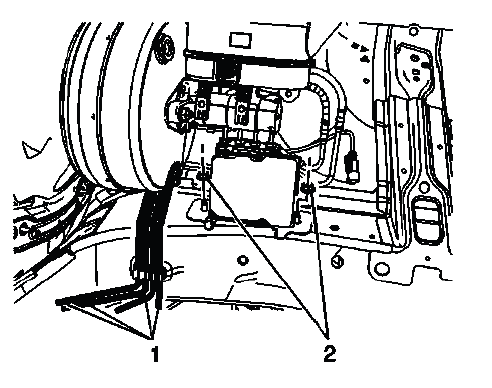
Fig. 44: View Of Front & Rear Brake Pipes
13. Install the 2 nuts (2) to the BPMV and bracket assembly and tighten to 20 (15 lb ft).
14. Install the front and rear brake pipes (1) to the routing clip on the frame rail.
15. Install the power brake booster vacuum sensor (1).
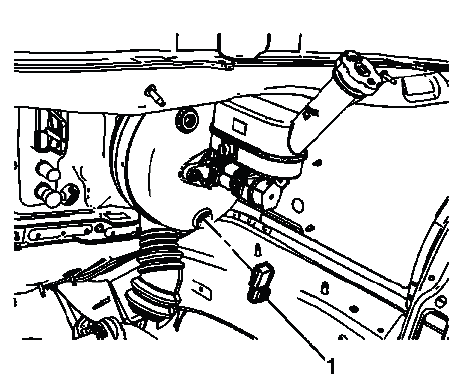
Fig. 45: Power Brake Booster Vacuum Sensor
NOTE: A small amount of denatured alcohol may be used as a lubricant for assembly. Do not use soap.
16. Connect the power brake booster vacuum sensor electrical connector.
17. Install the power brake booster vacuum check valve and hose assembly (1) to the brake booster.
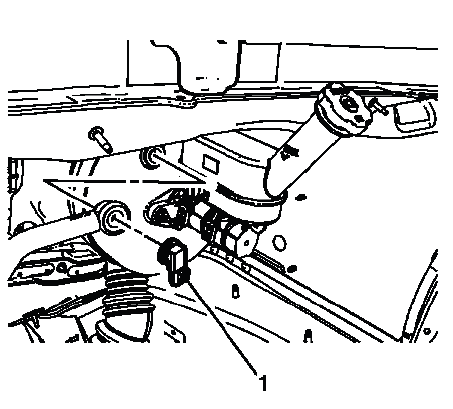
Fig. 46: Power Brake Booster Vacuum Check Valve And Hose Assembly
NOTE: A small amount of denatured alcohol may be used as a lubricant for assembly. Do not use soap.
18. Connect the brake fluid level indicator switch electrical connector.
19. Install the air cleaner housing cover and duct. Refer to Air Cleaner Element Replacement.
POWER BRAKE BOOSTER VACUUM CHECK VALVE AND HOSE REPLACEMENT
Removal Procedure
1. Turn the ignition switch to the OFF position.
2. Apply and release the brake pedal several times until the brake pedal becomes firm to deplete the brake booster vacuum reserve.
3. Remove the power brake booster vacuum check valve (1) from the power vacuum brake booster.
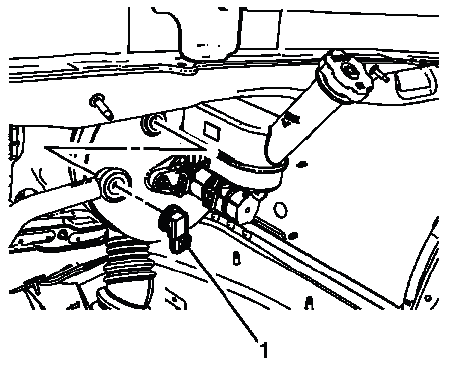
Fig. 47: Power Brake Booster Vacuum Check Valve And Hose Assembly
4. Remove the fuel injector sight shield. Refer to Fuel Injector Sight Shield Replacement.
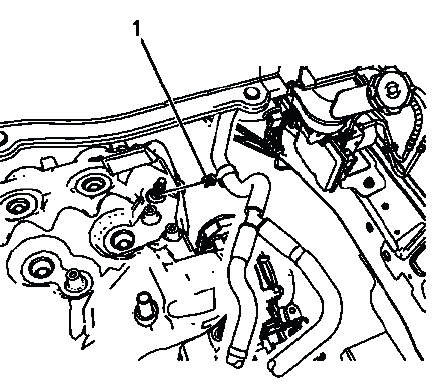
Fig. 48: Identifying Vacuum Hose Routing Clip
5. Release the vacuum hose routing clip (1) from the intake manifold ball stud.
6. Disconnect the power vacuum brake booster hose (1) from the intake manifold vacuum port.
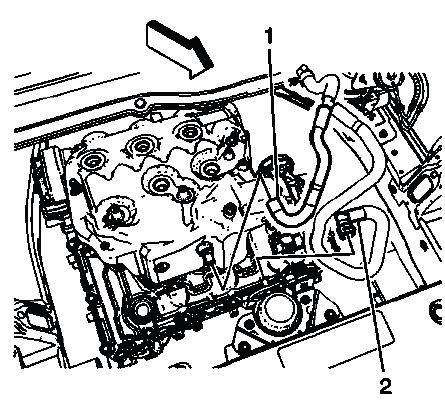
Fig. 49: Identifying Vacuum Brake Booster Hose Quick-Connect Fitting
7. Release the quick connect (2) from the power brake booster auxiliary pump.
8. Disconnect the power brake booster check valve and hose assembly (1) from the brake booster.
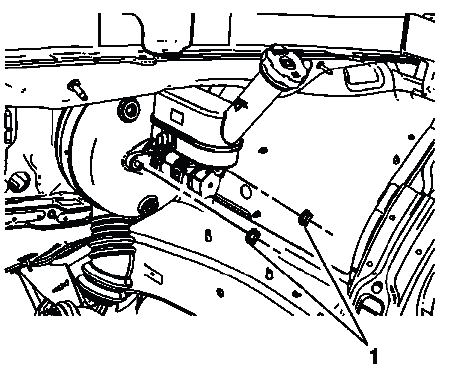
Fig. 50: Power Brake Booster Check Valve And Hose Assembly
9. Remove the vacuum brake booster hose assembly from the vehicle.
Installation Procedure
1. Install the power brake booster check valve and hose assembly (1) to the brake booster.
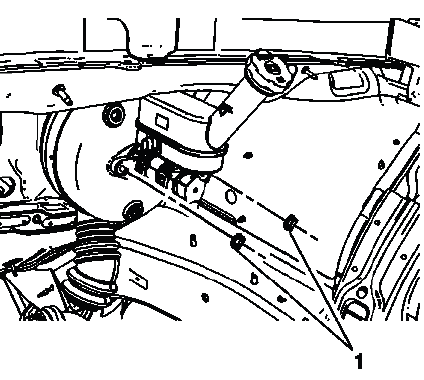
Fig. 51: Power Brake Booster Check Valve And Hose Assembly
NOTE: A small amount of denatured alcohol can be used as a lubricant for installation. Do not use soap.
2. Connect the power vacuum brake booster hose (1) to the intake manifold vacuum port.
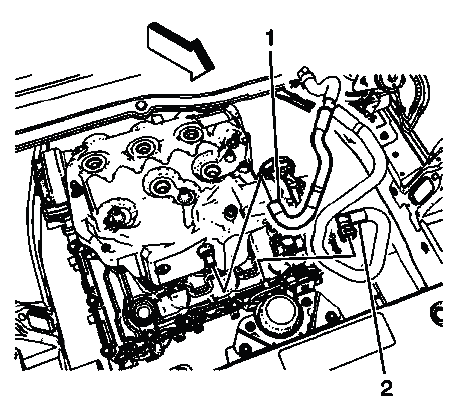
Fig. 52: Identifying Vacuum Brake Booster Hose Quick-Connect Fitting
NOTE: A small amount of denatured alcohol can be used as a lubricant for installation. Do not use soap.
3. Connect the quick connect (2) to the power brake booster auxiliary pump.
4. Connect the vacuum hose routing clip (1) to the intake manifold ball stud.
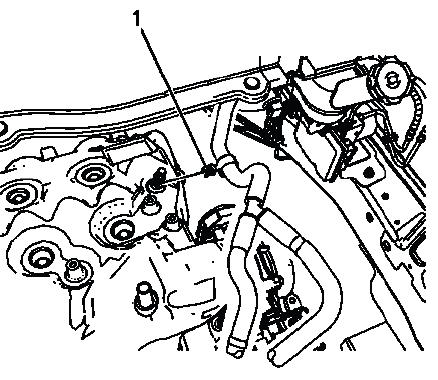
Fig. 53: Identifying Vacuum Hose Routing Clip
5. Install the power brake booster vacuum check valve (1) to the power vacuum brake booster.
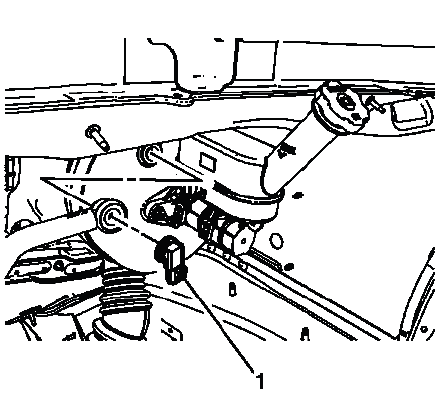
Fig. 54: Power Brake Booster Vacuum Check Valve And Hose Assembly
NOTE: A small amount of denatured alcohol may be used as a lubricant for assembly. Do not use soap.
6. Install the fuel injector sight shield. Refer to Fuel Injector Sight Shield Replacement.
POWER BRAKE BOOSTER VACUUM SENSOR REPLACEMENT
Removal Procedure
1. Turn the ignition switch to the OFF position.
2. Apply and release the brake pedal several times until the brake pedal becomes firm to deplete the brake booster vacuum reserve.
3. Disconnect the power brake booster vacuum sensor electrical connector.
4. Remove the power brake booster vacuum sensor (1) from the brake booster.
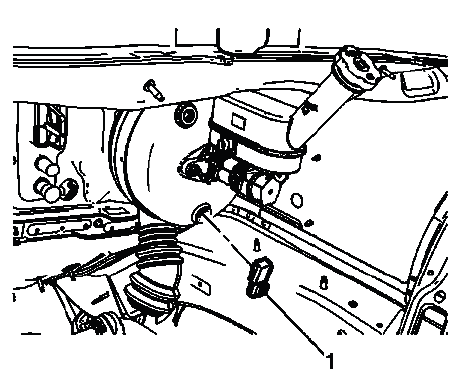
Fig. 55: Power Brake Booster Vacuum Sensor
Installation Procedure
1. Install the power brake booster vacuum sensor (1) to the brake booster.
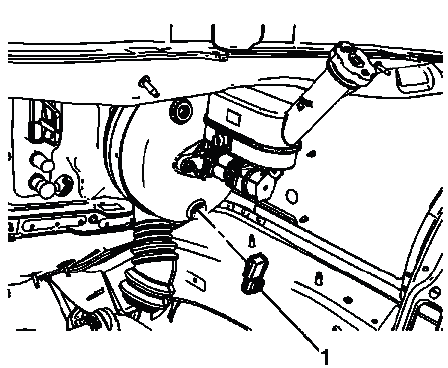
Fig. 56: Power Brake Booster Vacuum Sensor
NOTE: A small amount of denatured alcohol can be used as a lubricant for installation. Do not use soap.
2. Connect the power brake booster vacuum sensor electrical connector.
POWER BRAKE BOOSTER AUXILIARY PUMP REPLACEMENT
Removal Procedure
1. Turn the ignition switch to the OFF position.
2. Apply and release the brake pedal several times until the brake pedal becomes firm to deplete the brake booster vacuum reserve.
3. Remove the fuel injector sight shield. Refer to Fuel Injector Sight Shield Replacement.
4. Release the quick connect (2) from the power brake booster auxiliary pump.
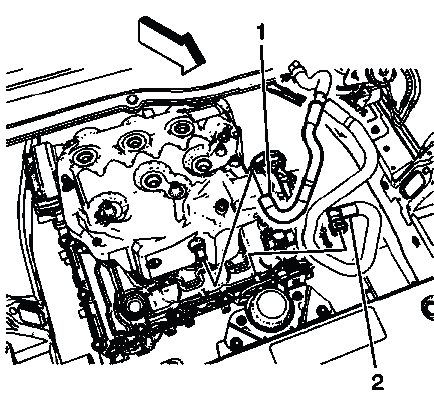
Fig. 57: Identifying Vacuum Brake Booster Hose Quick-Connect Fitting
5. Position the vacuum brake booster hose assembly aside.
6. Disconnect the power brake booster auxiliary pump electrical connector.
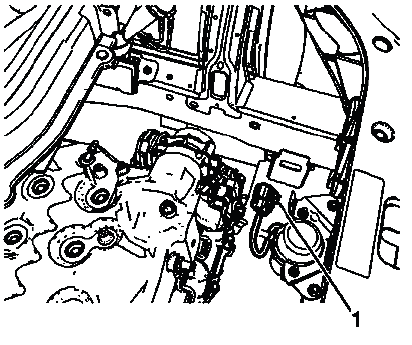
Fig. 58: Identifying Power Brake Booster Auxiliary Pump Electrical Connector
7. Release the power brake booster auxiliary pump electrical connector (1) from the bracket.
8. Remove the power brake booster auxiliary pump nuts (1).
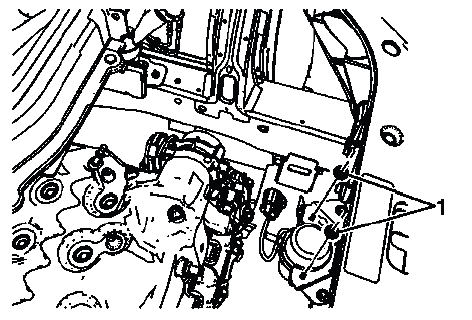
Fig. 59: Identifying Power Brake Booster Auxiliary Pump Nuts
9. Remove the power brake booster auxiliary pump bolts and the pump.
10. If necessary, remove the power brake booster auxiliary pump insulators (1) and sleeves (2).
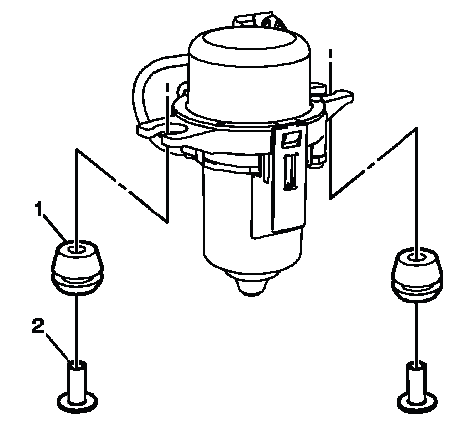
Fig. 60: Identifying Power Brake Booster Auxiliary Pump Insulators & Sleeves
11. If necessary, remove the power brake booster auxiliary pump bracket bolts (1) and bracket (2).
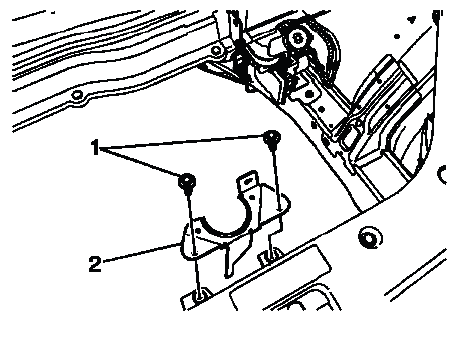
Fig. 61: Identifying Power Brake Booster Auxiliary Pump Bracket & Bolts
Installation Procedure
1. If

